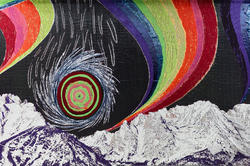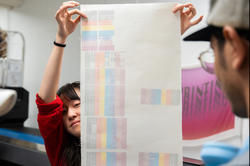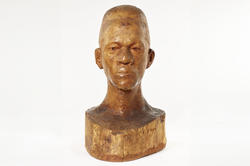The devoted RISD alum led a multidisciplinary, project-based spring course in which students created a cozy, inclusive space within her exhibition in progress.
Liz Collins Exhibition “Motherlode” Opens at RISD Museum
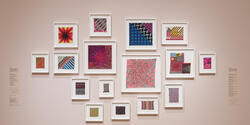
A new exhibition at the RISD Museum presents the first-ever US survey of work by artist and RISD alum Liz Collins 91 TX/MFA 99. Curated by Kate Irvin, Liz Collins: Motherlode (on view through January 11, 2026) comprises five galleries filled with apparel, drawings, paintings, tapestries, rugs, textiles and performance artifacts that speak to the artist’s devotion to her medium and to her community.
“I came out when I was a student here and explored my identity through fashion and textiles,” Collins says. “My practice is a great example of what a RISD education is all about: a combination of creative expression and technical expertise.”
Collins’ work is not presented chronologically, but the different galleries offer glimpses of her changing creative focus over the years: her meteoric rise as a fashion designer in the late ’90s; collaborative Knitting Nation performance pieces she created between 2005 and 2016 that shed light on the labor of making; and her lifelong drawing, painting and collage practice, which feeds directly into her textile designs and fine artworks.
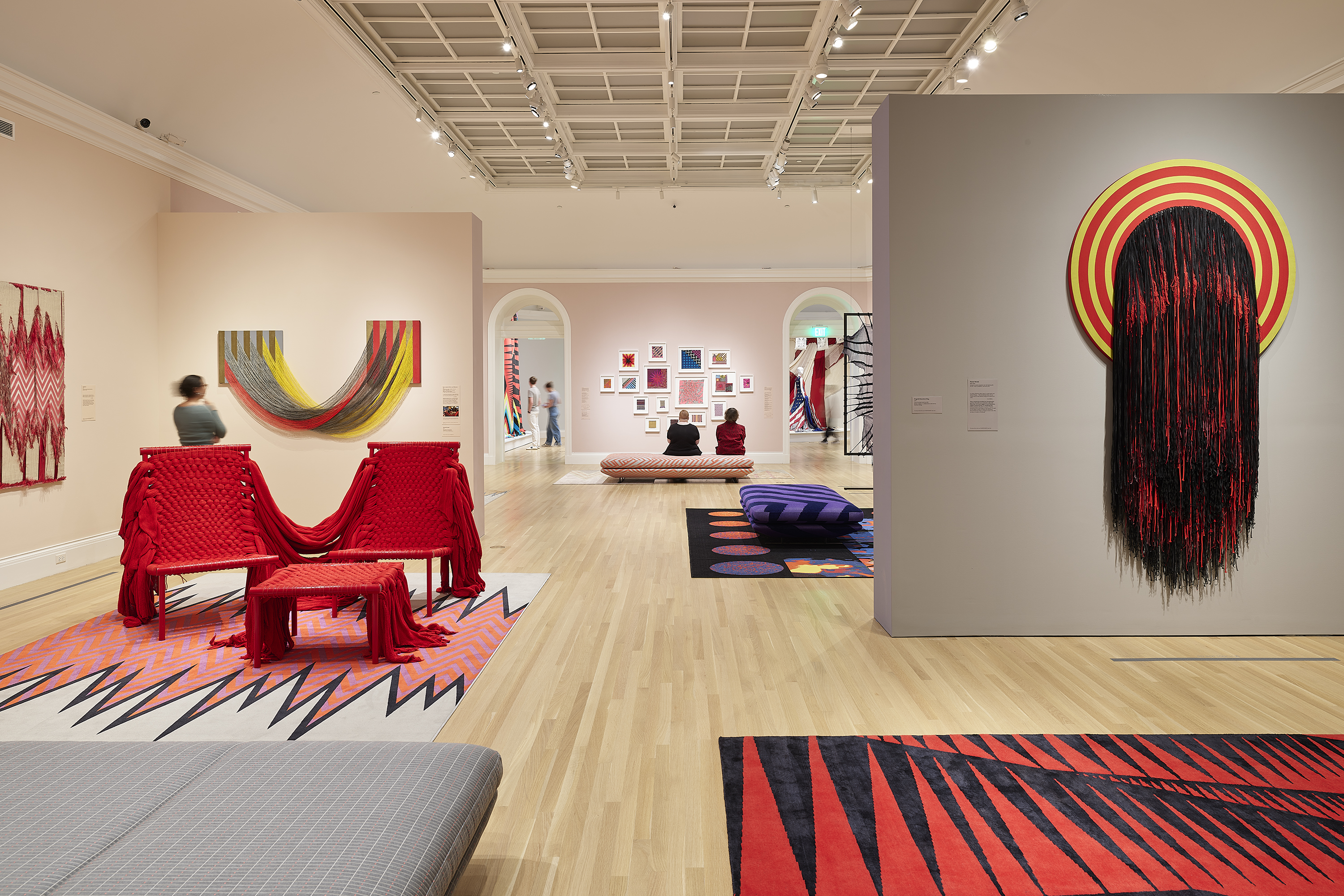
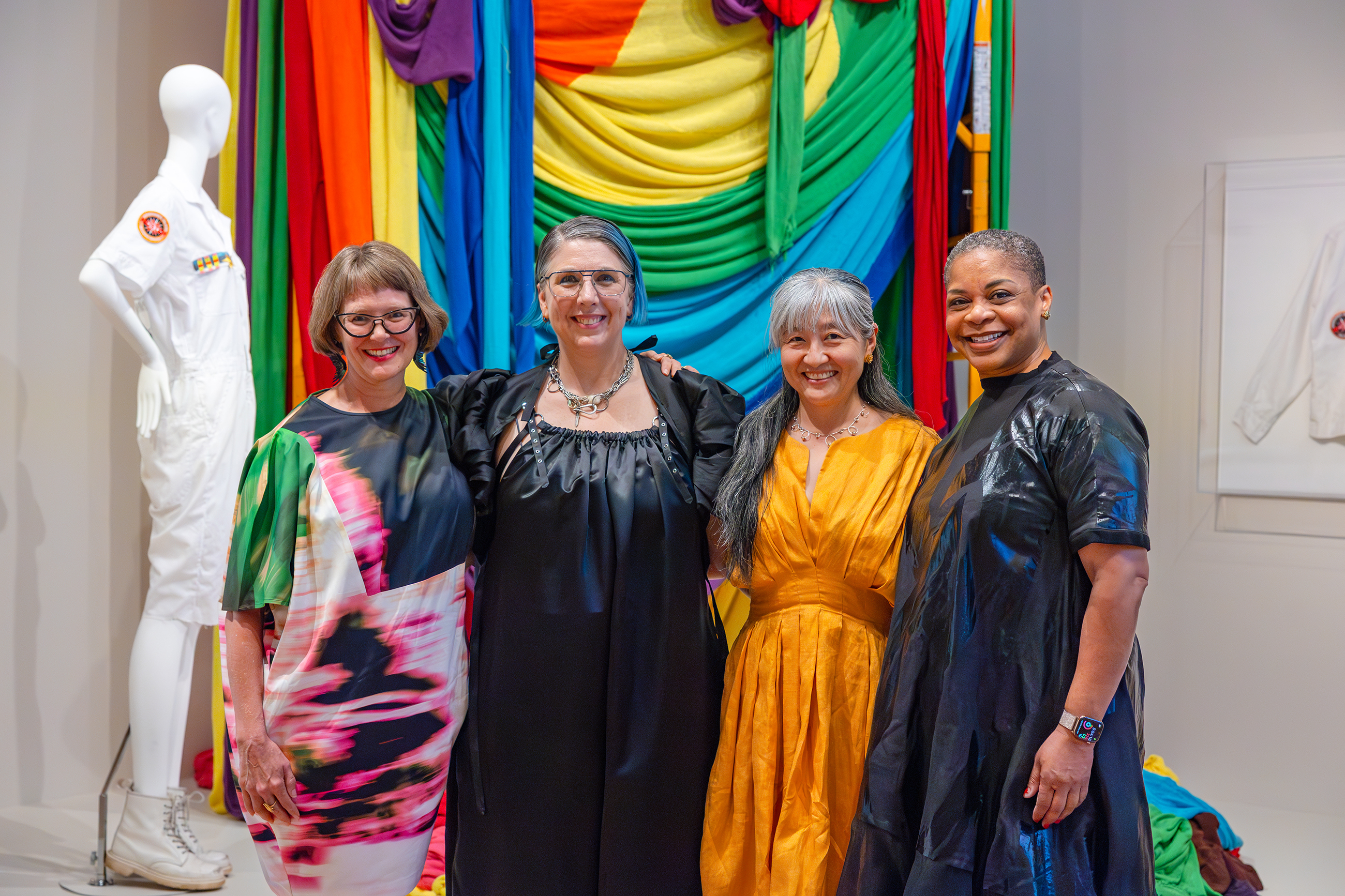
“I don’t draw boundaries between art, craft and design,” she explains. “I learned through persistence that I could keep doing what made sense to me.”
One of the through lines that ties the show together is Collins’ love of creative collaboration. It is perhaps most apparent in the museum’s Skylight Gallery, which she transformed into an intergenerational gathering place last spring with the help of a team of RISD students.
The walls are covered with her Acid Rain Floral wallpaper—which reflects on climate change and environmental precarity—and a diverse collection of paintings by a wide range of fellow queer RISD artists, including Esther Pressoir 23 PT* and MacArthur Award winner Nicole Eisenman 87 PT. “I love to engage with other artists,” Collins explains, “and this section of the exhibition was one of the initial drivers behind the show.”
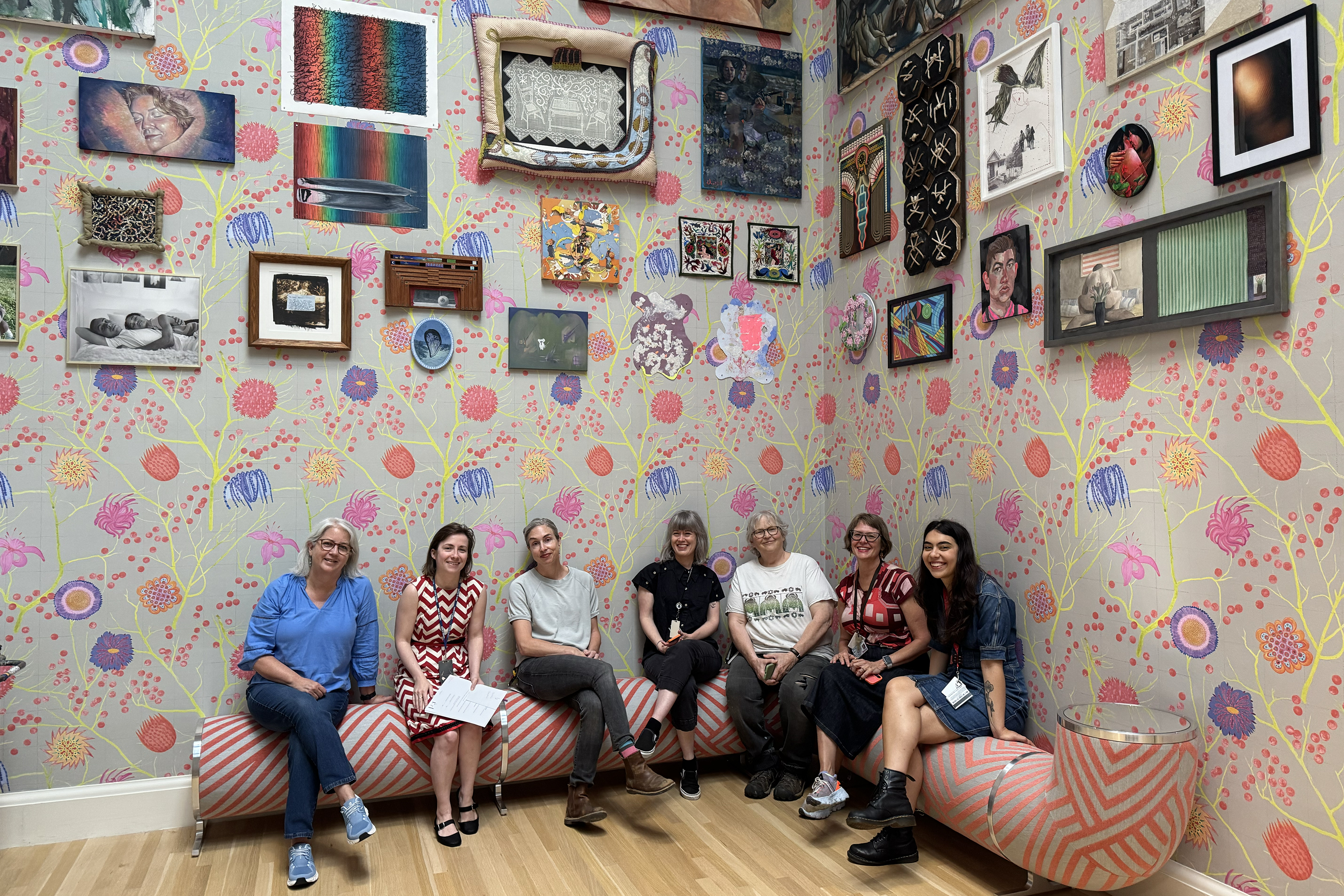
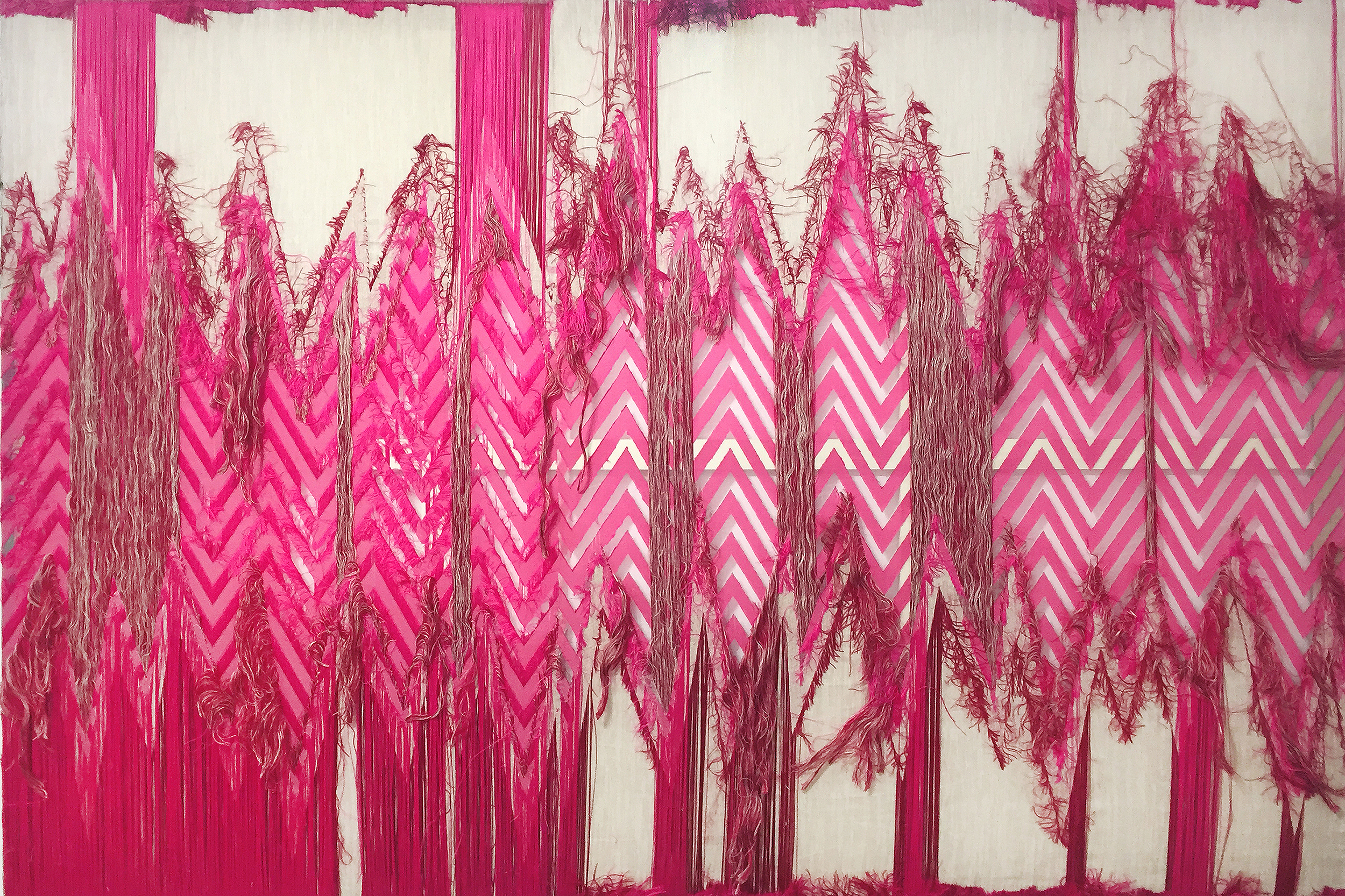
The largest space in the exhibition is divided into four thematic sections that help to explain the inspirations behind Collins’ vibrant, kinetic, geometric abstractions: sacrifice and devotion, love and connection, desire and invention, and collapse and fracture. She revisits some forms and inspirations iteratively over the years, like the mountains that populate Zagreb Mountains, a 2014 work on paper, Zagreb Mountain Rug (2022) and Unreachable (2022/2025), a Jacquard-woven silk and polyester tapestry.
Another example is Veins–Darkness, which Collins first created in 2005 by fusing blue and black knit veins onto white cotton cheesecloth. She returned to the piece in 2011, dyeing it black as a reflection of her dark emotional state, and again in 2025, mounting the work taut on a metal frame and thus exposing areas of weakness as well as the powerful connections holding it together.
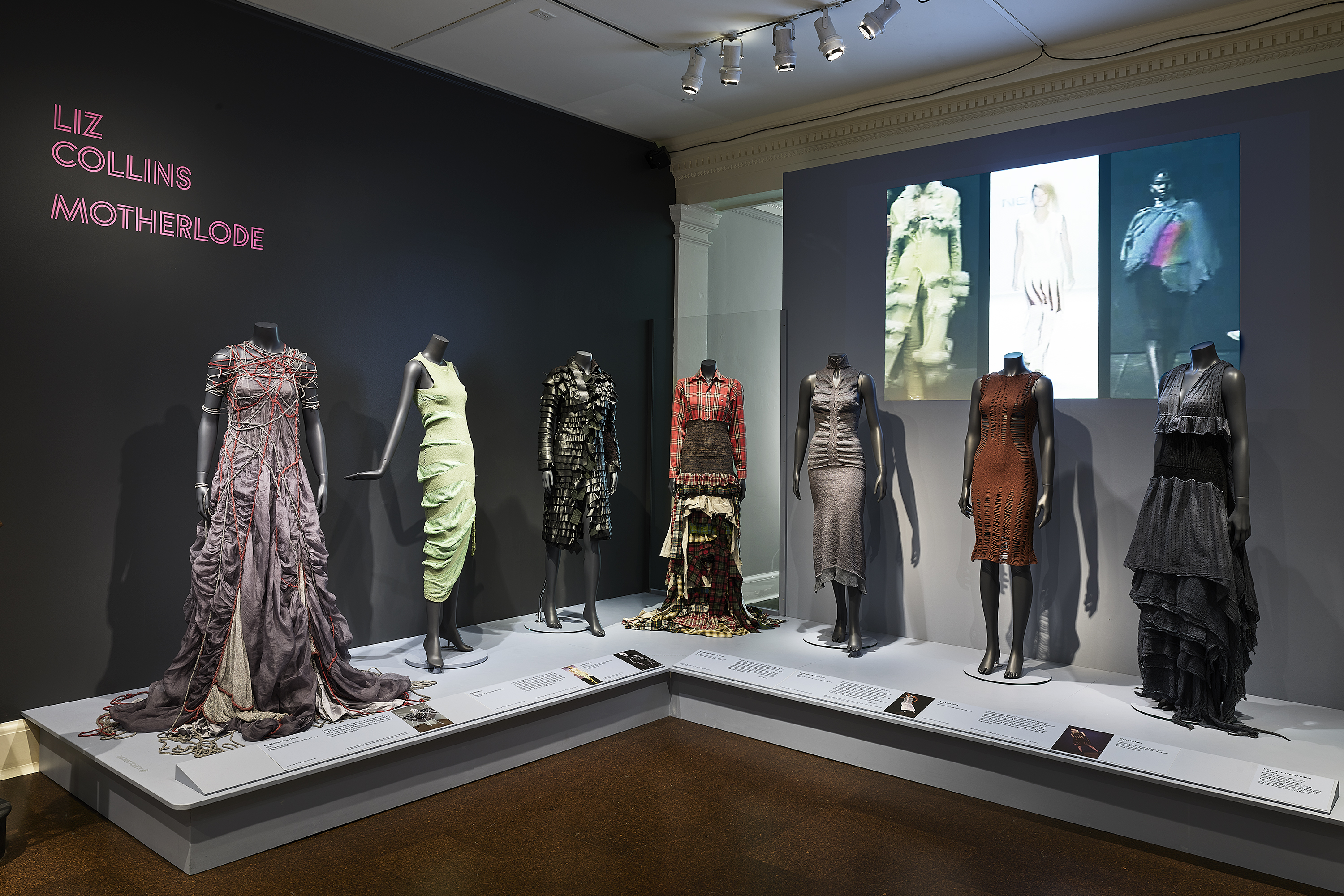
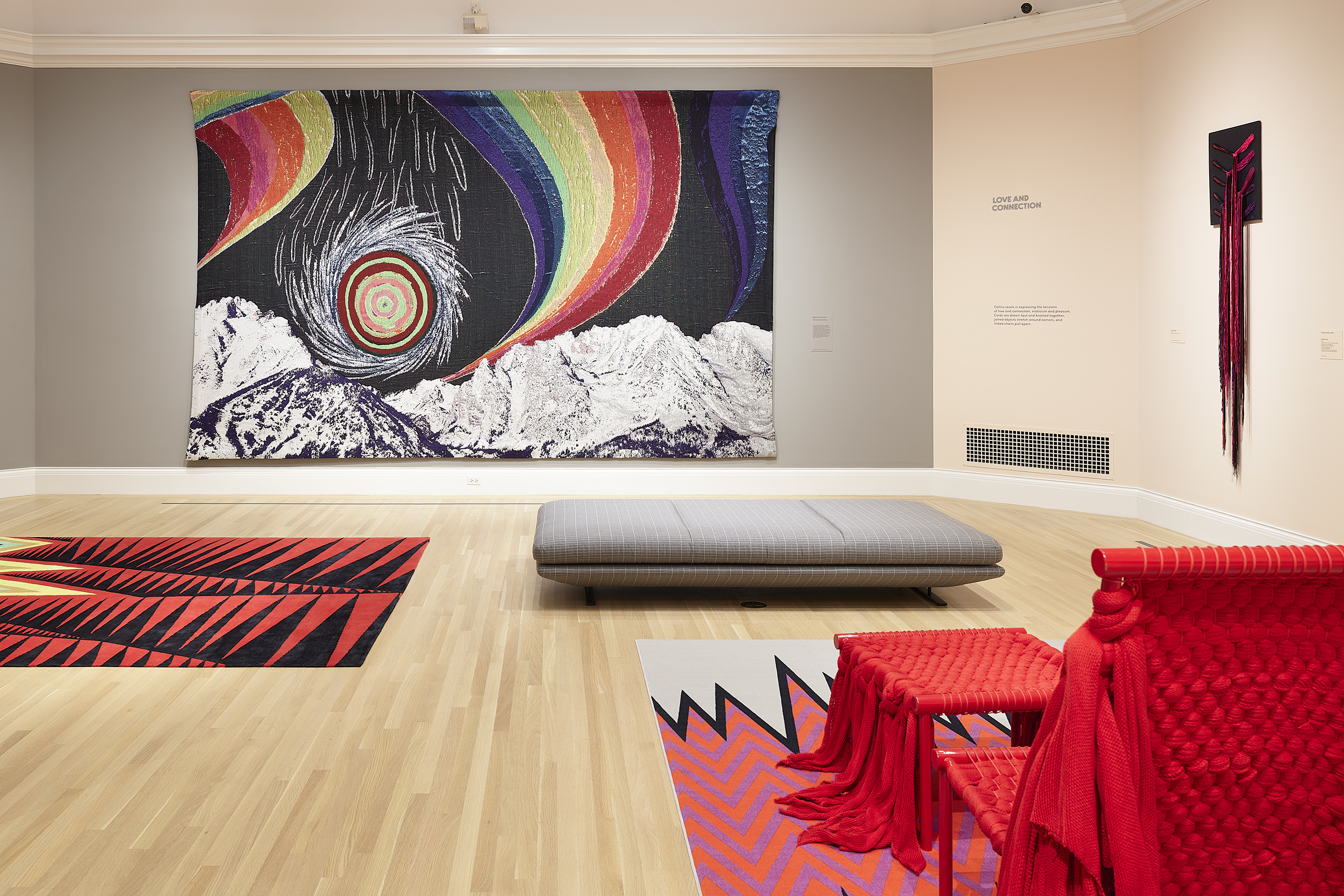
“The symbols in Collins’ work reflect on danger, power, rebirth and the life force that burns within us all,” says Irvin, curator of the museum’s Costume and Textiles collection. “She harnesses their power to express the liminal spaces vibrating with potential—spaces between chaos and order, tension and release, inner and outer, physical and emotional, pain and pleasure, agitation and seduction.”
The artist describes her process as “instinctual” and draws connections between her own creations and those of a long line of artists who came before her, including late Swedish painter and mystic Hilma af Klint. “Creating works that stir up feelings of awe, joy, pleasure and wonder as a reprieve from the horrors of life is something I care about and try to do,” she says.
Simone Solondz
July 29, 2025
